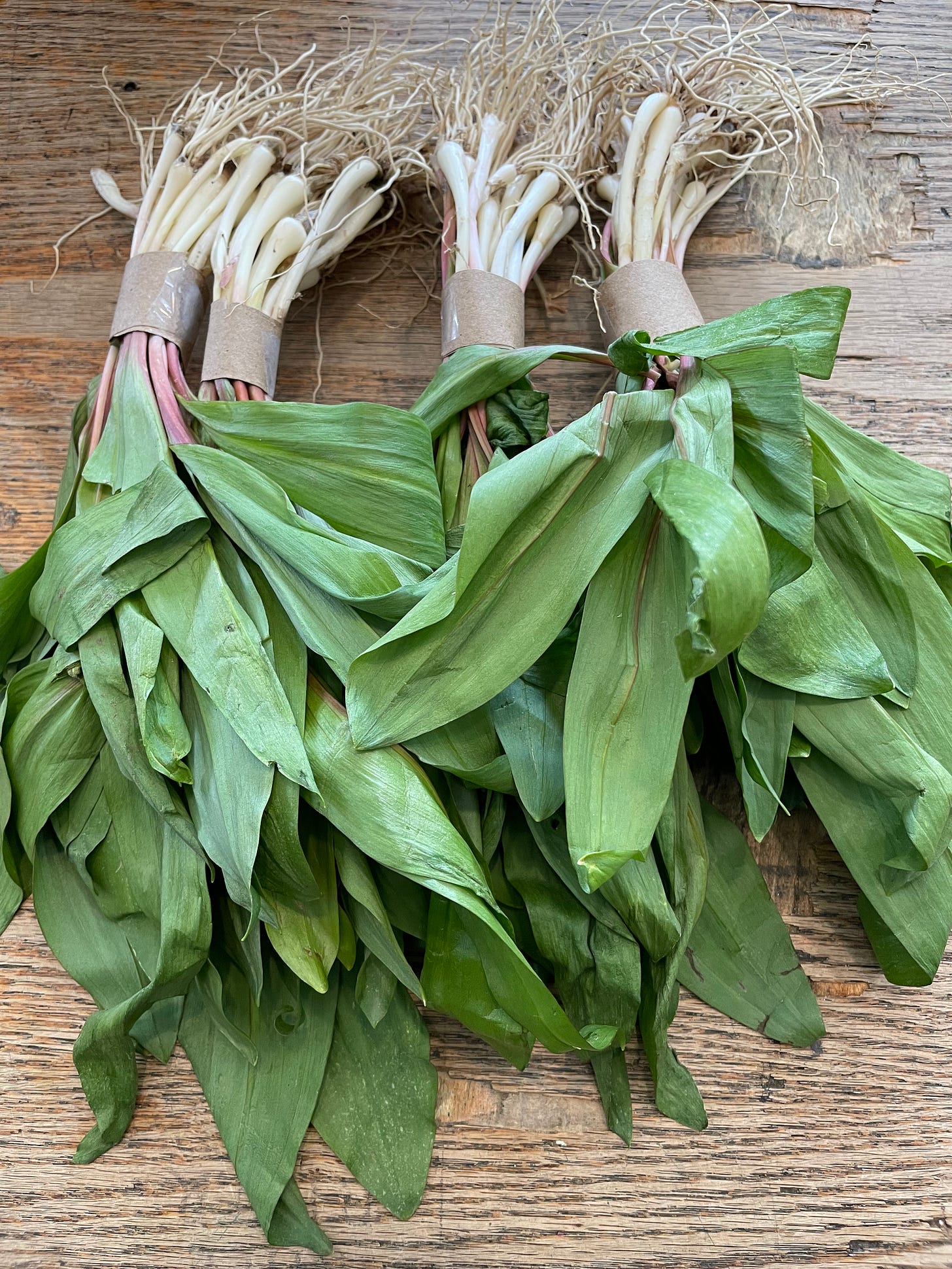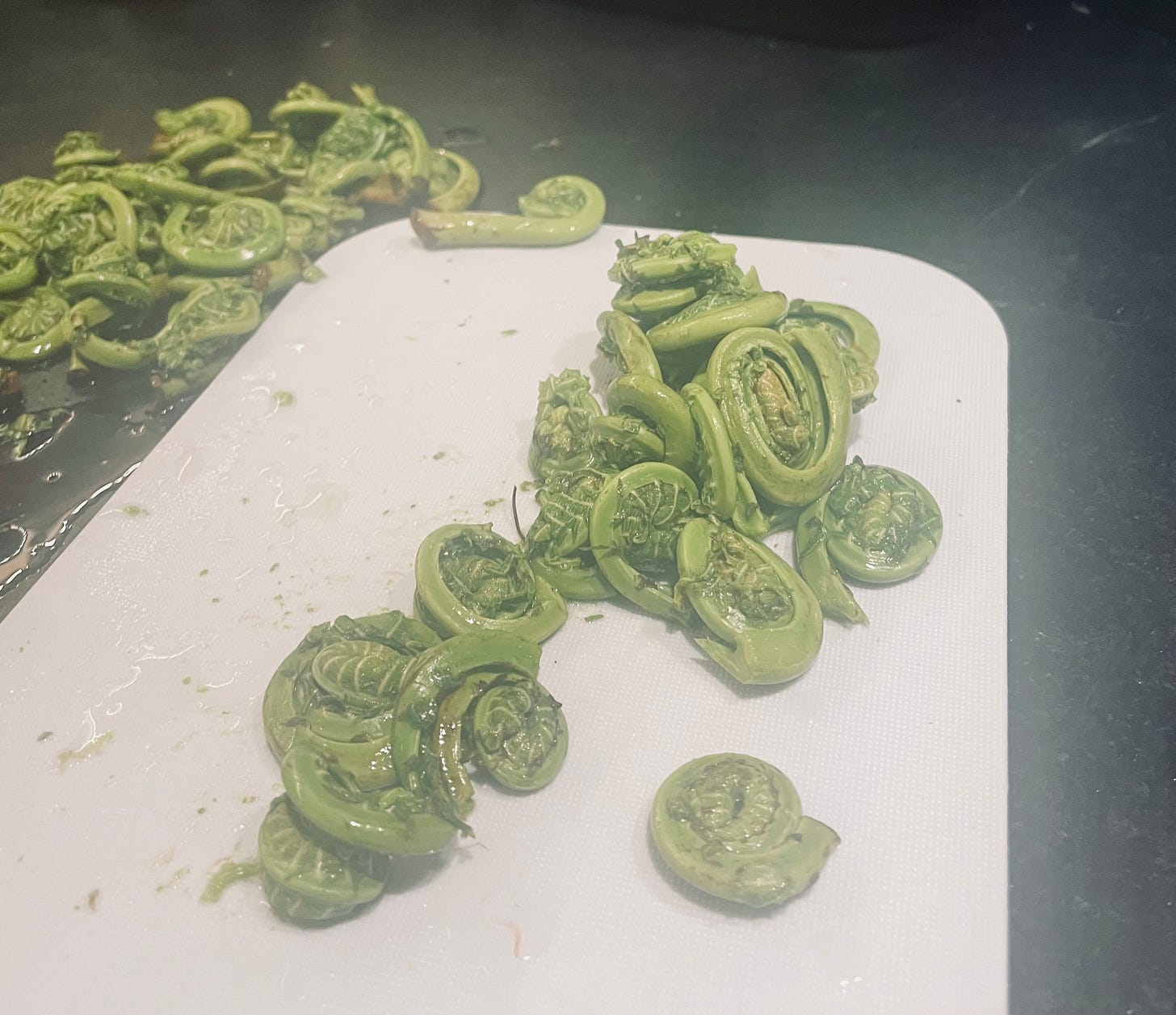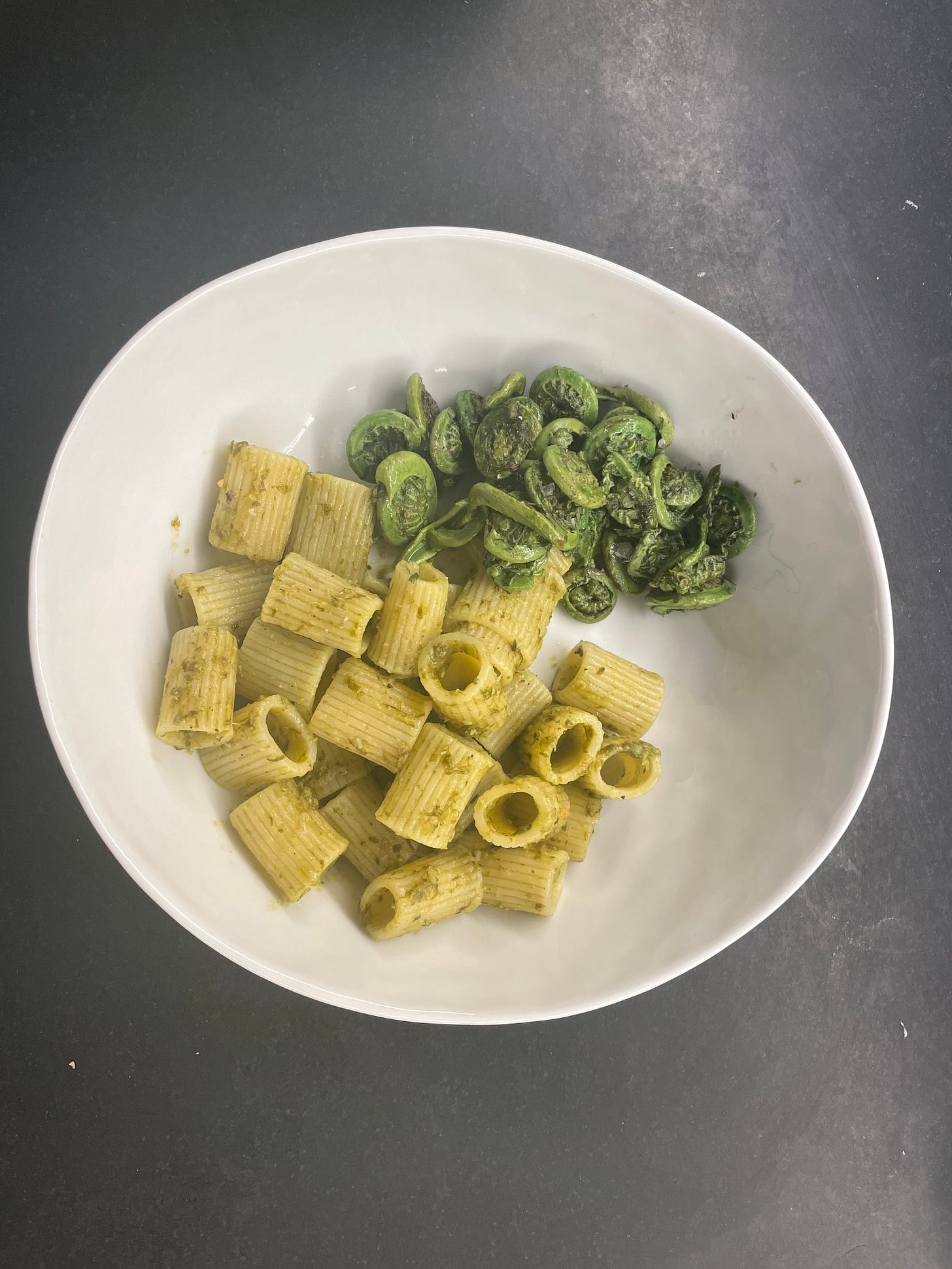Cloak-and-dagger in the garden
It's ramps and fiddlehead season, which means secret foraging and an annual treat
We’re a month past the spring equinox, which means it’s fiddlehead and ramps season again. Both plants have made their annual, short-lived appearance in the woods and along streams in the northeastern United States, proudly holding up the culinary wing of the ephemerals that dot the landscape this time of year.
I have a story about fiddleheads, which I’ll get to. But what I love about fiddleheads and ramps is the secrecy surrounding them. Now, you can buy them at Guido’s, the fabulous locally owned grocery 15 minutes away in Great Barrington, and even the Mill River General Store, the center of village life here. That’s easy. The real art is finding them on your own, and not telling anyone where.
There’s a local chef who knows these woods and knows where to find ramps. He has his go-to spots. Ask him where, though, and he’ll greet you with a wry smile, a twinkle in his eye and a vague promise that maybe he might take you foraging with him some day. Last week I was walking near the Housatonic River with an expert birder and his girlfriend and she mentioned we were getting close to a favorite spot for fiddleheads. The conversation was quickly diverted: “I think that’s a yellow-bellied sapsucker. Over there!”
This cloak-and-dagger act is amusing but it’s also probably a good thing. I was reading about fiddleheads and ramps the other night – you have to understand it can get kind of quiet in western Massachusetts – and one of the concerns of environmentalists is over-foraging. The idea of hordes combing the woods with buckets and trowels digging up random plants is kind of scary, come to think of it.
Ramps, whose flavor resembles a cross between a mild onion and mild garlic, are found in clumps of plants with two long v-shaped leaves atop delicate purple stems and a tiny white bulb. Some say they shouldn’t be dug up at all but an acceptable compromise is to dig up only a portion – maybe a third – of each clump, leaving enough to ensure it comes back next year. Since the entire plant can be cooked, foragers can also just harvest the leaves and stems and leave the bulbs in the ground.
Fiddleheads are stranger, and can pose health risks despite their playful name. The most widely eaten fiddleheads are the unfolding leaves from the ostrich fern, their bright green coiled shoots resembling the scroll of a violin. They have a pleasant, slightly bitter taste, something like an asparagus. They should be picked young, when still tightly coiled, and need to be washed and then steamed or boiled for a good 10-15 minutes to avoid the risk of foodborne illness. Other varieties of young ferns can be harmful, so picking your own fiddleheads is a bit like foraging for mushrooms. Like ramps, leave some in the ground. One simple rule: take just three per clump.
Joe Czajkowski, who owns a 400-acre farm in Hadley, Mass., says identifying a fiddlehead isn’t hard at all. “The ostrich fern is fuzzy as can be, like it has hair on it,” he says. “You can tell it from 50 feet.”
Each spring Czajkowski supplies the Mill River Store and numerous other groceries and markets in the region with ramps and fiddleheads. It’s a small part of his business, which specializes in berries, peaches, apples, plums and a variety of vegetables. He harvests some ramps and fiddleheads on his land, which sits near the Connecticut and Falls Rivers, but he also buys from area residents who forage for the vegetables on their own. “They’re poorer people and they need the money,” he says. He reminds them to leave some plants behind. “They do because it’s part of their livelihood. They come back to it every year.”
All of this assumes you actually are among those who like – or even know about – putting ramps or fiddleheads on your plates come dinner time. Ramps are useful like onions, shallots or garlic in flavoring dishes. You can make ramp butter, which is a wonderful spread, or ramp pesto, which we did the other night, essentially substituting ramps for basil. We tossed it with pasta and spread it over sauteed chicken breasts.
This brings me back to my fiddleheads story. Many years ago, when my wife and I were first dating, she invited me over for dinner at her apartment in Newmarket, N.H. Somewhere – she thinks she may have bought them but I suspect she foraged them in the woods – Katie had scored a bunch of fiddleheads. As best as we can recall, she sauteed them in butter and served them over brown rice. (This was the ‘70s, I remind you.) They were chewy, earthy and I tried my best to get them down. It was a dinner I’ve never forgotten, one I often lovingly describe to friends as Katie rolls her eyes.
The other night we decided enough time had passed. We had fiddleheads again. This time we parboiled them and then sauteed them in butter, olive oil and garlic. Tossed with a little lemon juice and sprinkled with a few salt flakes and a twist or two of ground pepper, they were wonderful.
Here’s a recipe for sauteed fiddleheads with all credit to It’s a Veg World After All:
And one for ramp pesto, from the reliable Serious Eats:








It is West Virginia ramp season at DMV Farmers Markets and we are roasting our ramps with asparagus. just salt and OO. The 80+ degree heat expected this week will quickly end ramp season but it has been nice.